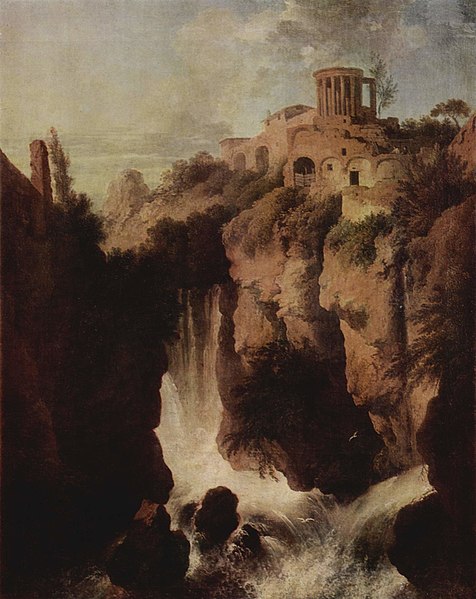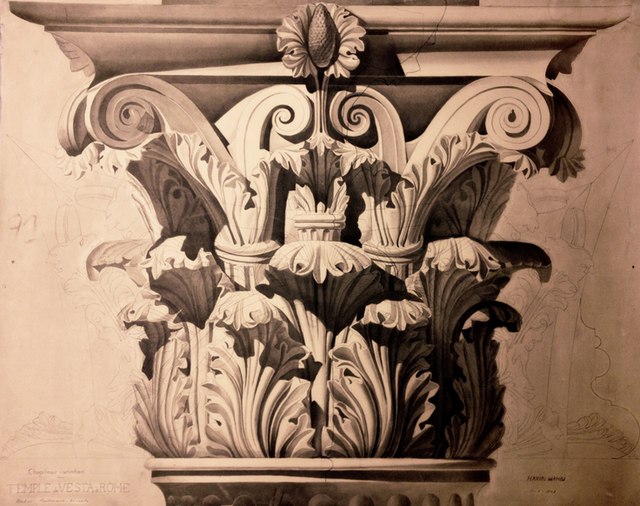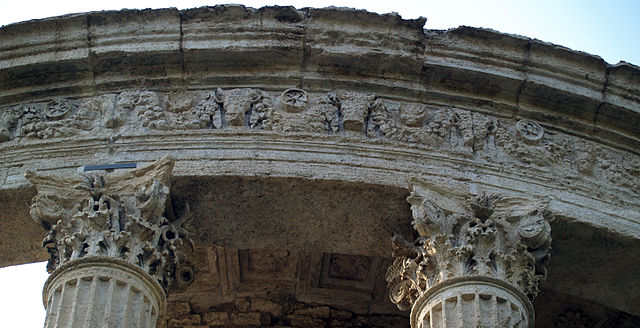Bucranium was a form of carved decoration commonly used in Classical architecture. The name is generally considered to originate with the practice of displaying garlanded, sacrificial oxen, whose heads were displayed on the walls of temples, a practice dating back to the sophisticated Neolithic site of Çatalhöyük in eastern Anatolia, where cattle skulls were overlaid with white plaster.
Garlanded bucrania on a frieze from the Samothrace temple complex
Bucranium on the frieze of the Temple of Vespasian and Titus in Rome.
Neolithic bucrania from Çatalhöyük, 7500-6400 BC, Museum of Anatolian Civilizations, Ankara, Turkey
Ancient Greek bucrania on a bell krater from Rudiae with an offering scene, by the Bucranium Painter, c.375-350 BC, ceramic, Museo archeologico Sigismondo Castromediano, Lecce, Italy
The so-called Temple of Vesta is a small circular Roman temple in Tivoli, Italy, dating to the early 1st century BC. Its ruins are dramatically sited on the acropolis of the Etruscan and Roman city, overlooking the falls of the Aniene and a picturesque narrow gully.
Falls of the Aniene by Christian Wilhelm Ernst Dietrich, c. 1745-50: a romanticized view
A modern photograph
Drawing of a 19th-century "Tivoli order" capital, reconstructing those of the temple
The rich order was admired and often copied








